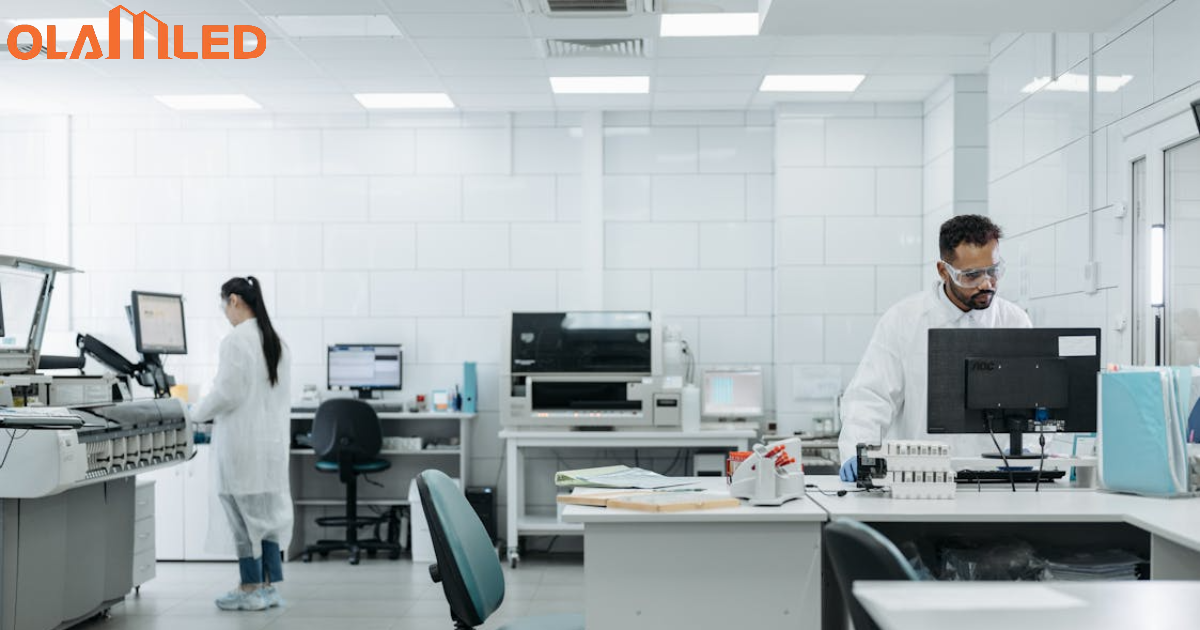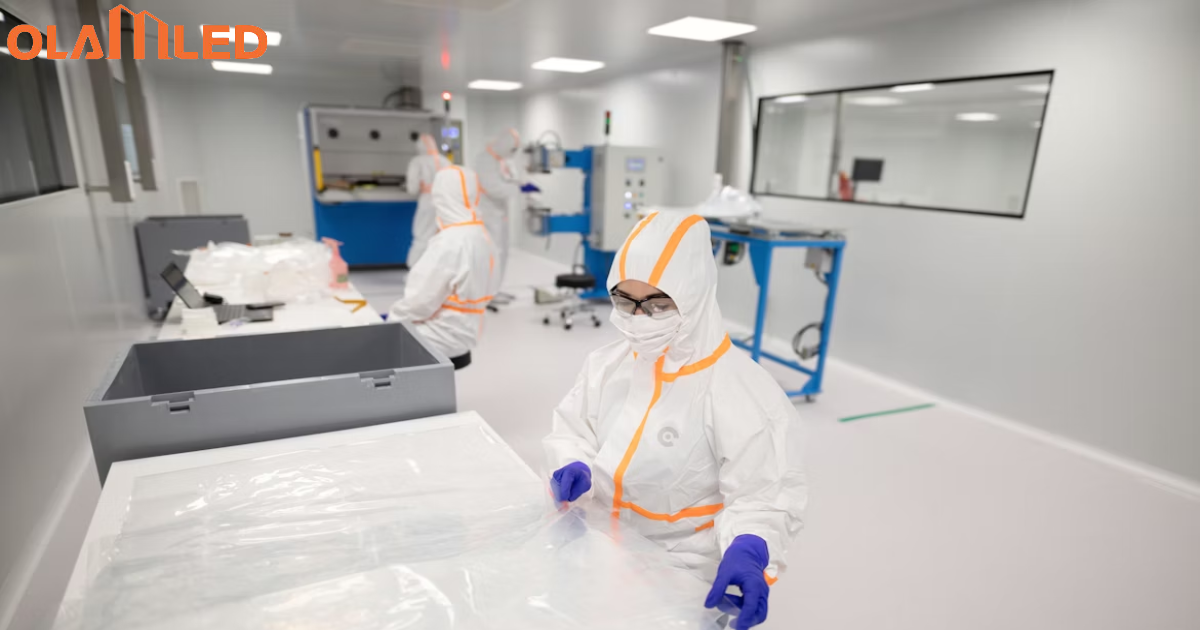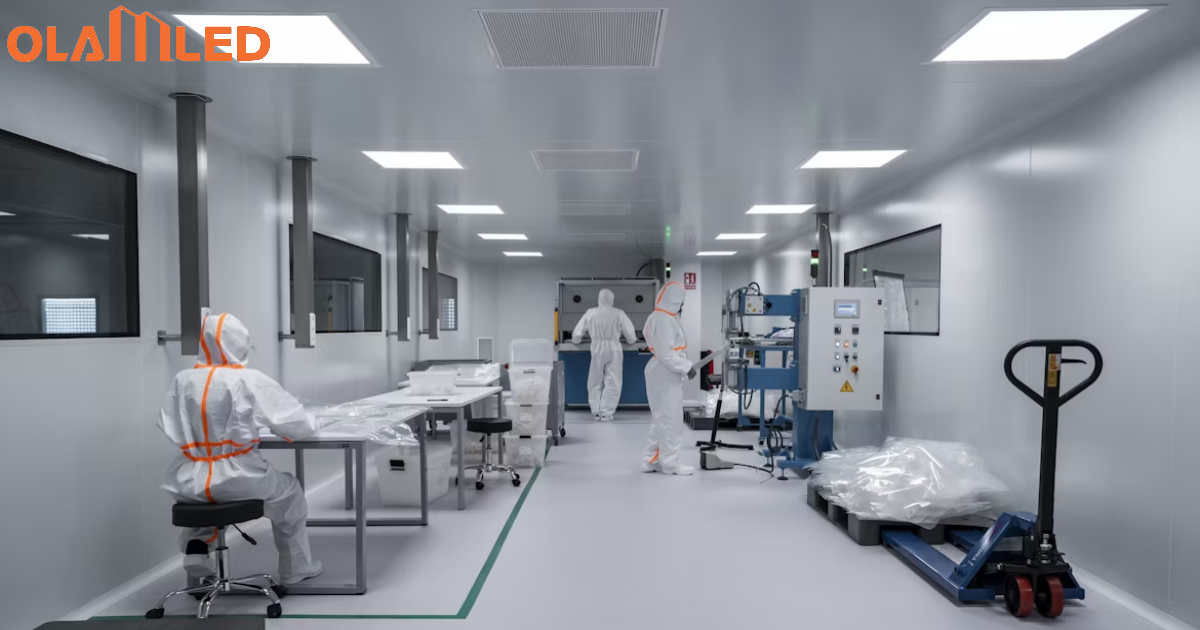Lighting is crucial for creating an appealing and aesthetically pleasing environment. There are many factors to consider before selecting commercial lighting, including the types of lighting suitable for illumination and its cost-effectiveness.
The guide below will help you explore all the vital tips to maximize the commercial lighting design for various spaces, from offices to restaurants or warehouses.
Top 20 Commercial Lighting Design Tips.
You must read below if you need to know about some helpful commercial lighting design tips.
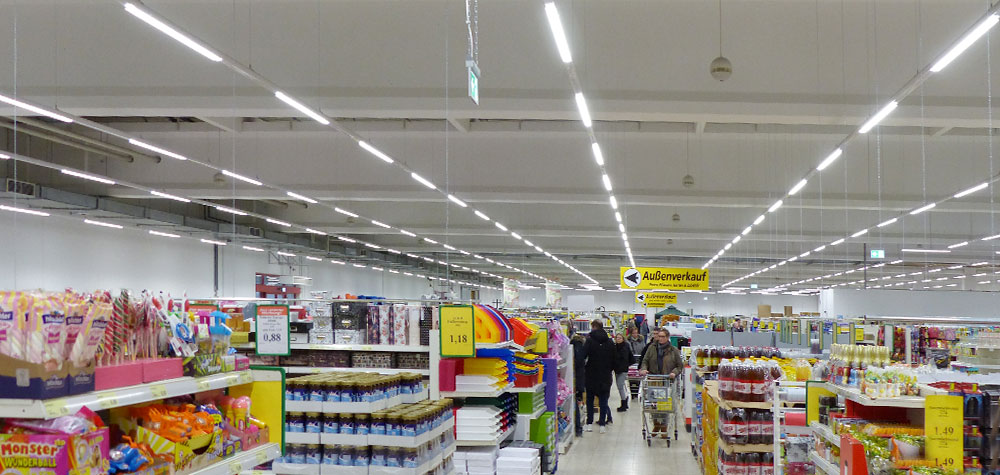
1. Assess Your Lighting Needs
The unit used to measure the lighting in any space is “foot-candles” or it could be measured in the number of lumens per square foot. There are many different spaces for which we can measure the foot candles.
For example, hallways have 20-25 foot-candles; auto and retail shops have 50 foot-candles. On the other hand, classrooms and department stores have 40 foot-candles. A warehouse has 10 to 30-foot candles, whereas a factory has 30 to 100.
2. Ensure Consistency in Light Temperature
A light fixture comes in a variety of colors and temperatures. It is important to use the same temperature in the overall space to create an appealing environment that is soothing to the people in that space too.
White light with a touch of yellow candlelight is known as warm white below 3000K. It tones down the blue shades, adds a touch of yellow to green and white, and also improves the shades of orange and red.
On the other hand, neutral white 3000K-3500K does not focus only on yellow or blue; in fact, it enhances almost all colors. Cool white above 3500K is more like a bluish, which enhances blues and brings a tint of blue color to whites and greens.
Cooler tone lights make a space look more spacious, whereas warm lights can be used for a cozy and smaller space. Places such as restaurants, bars, offices and residential places prefer a warm color tone rather than warehouses, departmental stores and huge office buildings.
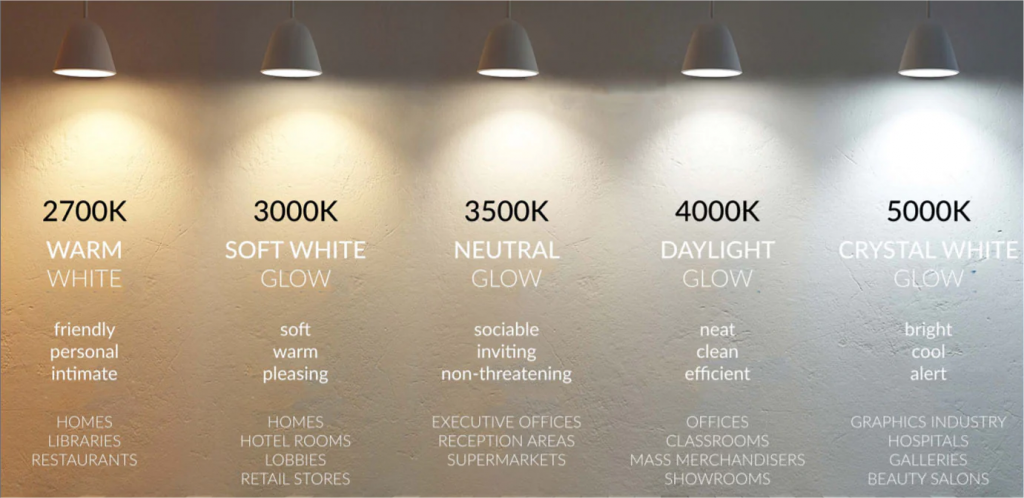
3. Evaluate Color Rendering Index (CRI)
Color Rendering Index uses a 0 to 100 percent scale to see how well the light renders the color. You can always calculate the CRI for comparison with test and reference light sources with the help of a color palette of reference colors.
The average score, which varies from 0-100, shows how well the light source matches the reference source, whereas 100 represents an accurate match.
High CRI represents natural color which is far much better. A CRI ranging from 80 to 100 is preferred for a more realistic showcasing.
4. Optimize Energy Efficiency
LED lights tend to be more expensive than traditional light bulbs, but when it comes to energy efficiency, they are preferred and last long.
In the long run, using LEDs will save up your and the client’s costs because they are energy efficient and help improve the overall space’s sustainability rating. Also, power surges make LEDs less likely to face any burst-out.
5. Tailor Lighting to the Workplace
When it comes to lighting, it is very important that the color, tone, brightness and amount of lighting all match your space’s ambience.
The purpose of the building is important, whether it will be used as a warehouse where the lighting should be cool and bright or is it a restaurant where the lighting should be warm with a touch of accent lighting to draw attention to the art done on the walls.
6. Enhance Outdoor Landscaping
Outdoor landscaping is crucial to draw the attention of the people passing by to see what the brand is. Hence, many different lighting strategies can be used, such as colored or statement lighting by uplighting or downlighting. By these techniques you can make your commercial property look attractive at night.
In order to make the property look more welcoming to the people, you can use warm-toned lighting along with adding lighting to the bushes and trees near the property. Another way to bring more emphasis to the unique features of the business, colored lights can be used.
If a property has a huge pathway or a passage, placing lights such as fairy lights or lanterns can help people reach the staircase or cross the passage safely, which will also add to the beauty of the building, making it much more appealing and aesthetic.
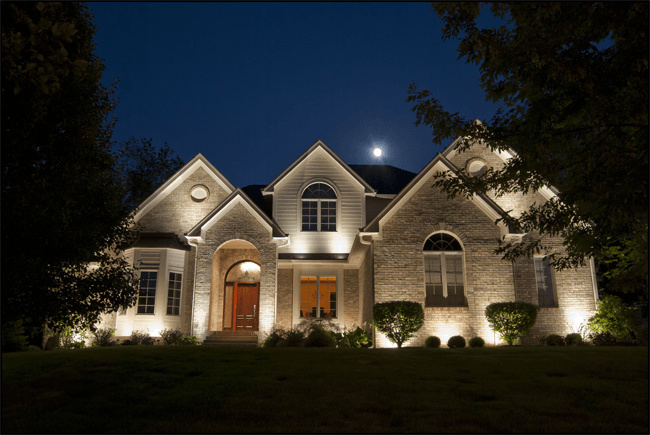
7. Showcase Your Brand Identity
In order to create brand recognition, you can add lights to the building to stand out at night. Many different brands have used this technique by adding a pop of lighting to the whole building, drawing every individual’s attention to the building.
8. Consider the Significance of Natural Light
One should never underestimate the power of natural light. Natural light has a huge drive towards lifting a space’s entire mood and energy.
Make the most of windows in huge sizes, allowing natural light to pass and making the space look more open and pleasant. The main advantage of LED lighting is that its CRI is quite high, similar to natural light.
9. Implement Layered Lighting Strategies
Using layered lighting strategies means using different lighting sources, such as accent lighting, to enhance the decorative features, adding to the visual interest.
You can use ambient lighting, which will work as a primary source of overall lighting, whereas task lighting could target a particular area in that space, such as reading or writing.
Combining different lighting sources, decorative lighting, and natural lighting can work out a working space’s whole theme and ambience.
10. Apply Task Lighting Appropriately
Task lighting refers to using an additional light to carry out a certain task requiring more focused and higher-level lighting. Since it’s necessary to perform a particular task, using a cost-effective energy source is also important. Task lighting could be floor lamps or a light placed over a ceiling.
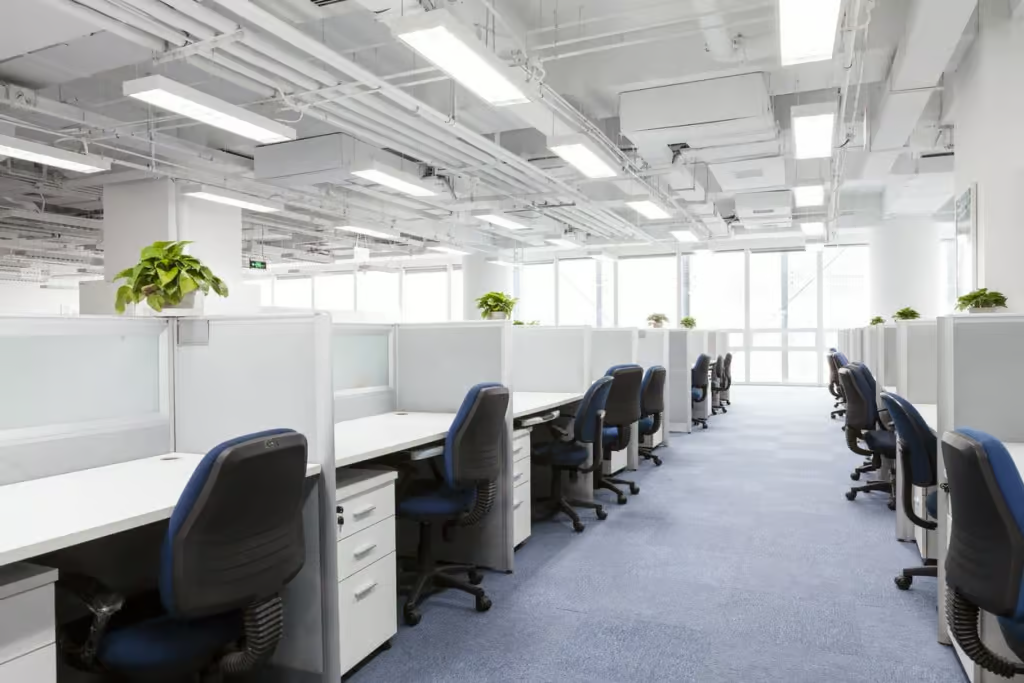
11. Placement of Emergency Lights Must be Done Smartly
When setting up a space, taking care of setting up emergency lighting is very crucial. Placing emergency lights on exit signs and important directional signs must be placed where they can easily be seen by the people working and the customers too.
12. Plan for Lighting Duration
To be cost and energy-efficient, you should see what the working hours of the business are. Whether all the lights need to be turned on during business hours or one could use natural lighting. All these questions will help in deciding upon the lighting fixtures.
13. Address Glare and Reflections
Understanding the reflection of light from different types of surfaces is extremely important. For example a higher illumination is created when the light is bounced back into the space from a surface with a higher reflection rate. Adjusting the lighting pattern to avoid glare or unnecessary reflections and achieve the required brightness level is important.
14. Utilize Lighting for Contrast
Working with contrast while lighting a space is important; otherwise, the whole working environment will look dull because it won’t be possible to see the colors.
15. Foster a Unified Atmosphere
No matter what technique you use to create a lighting design plan, the most important thing is to bring a unified environment where the business maximizes its energy efficiency and employees work at their best productivity.
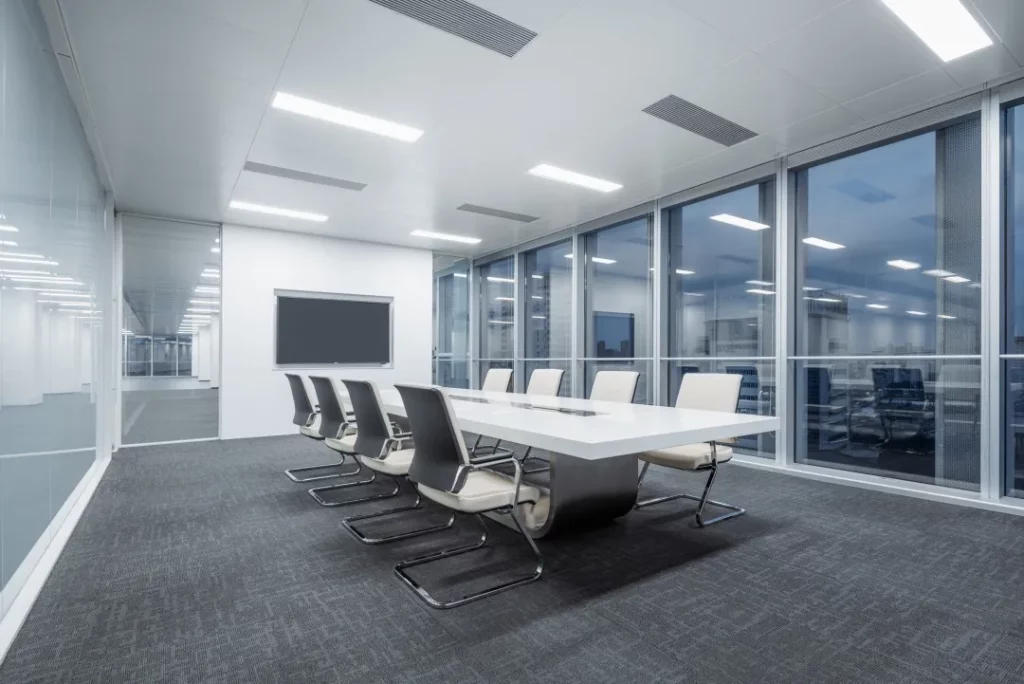
16. Illuminate Key Business Areas
Adding proper lighting design plans to the outdoor of the business is important as it will help the business look more appealing as the lighting will highlight the features of the landscape. Certain outdoor areas appeal the best when proper lighting is used.
17. Anticipate Future Lighting Upgrades
Initially, when planning for the lighting design, you must remember that the businesses grow and the needs change. Therefore, the lighting should be easy to change and flexible. This could be done by using stakes or by adding slack wire this means that there won’t be any need for rewiring as the trees grow.
18. Integrate Various Lighting Methods
The overall structure of your business requires a combination of lighting, and the same design plan may only apply to some of the landscape. You need to work out different techniques that suit each space area.
This way, you will create a lighting design plan to create an appealing ambience for your space. Different lighting techniques include:
- Up-lighting offers upward lighting, which helps illuminate trees, walls, statues, etc.
- Down-lighting offers illumination in the downward direction, which enhances the landscape.
- Path lighting helps illuminate the passages or driveways to light them up and provide a safe path for visitors.
19. Align Lighting with Business Functions
Different working spaces require different lighting; for example, a restaurant has to install dining lighting that will appeal to the customers. Whereas, an art gallery owner has to use proper bright lighting so that the visitors can view the art displayed.
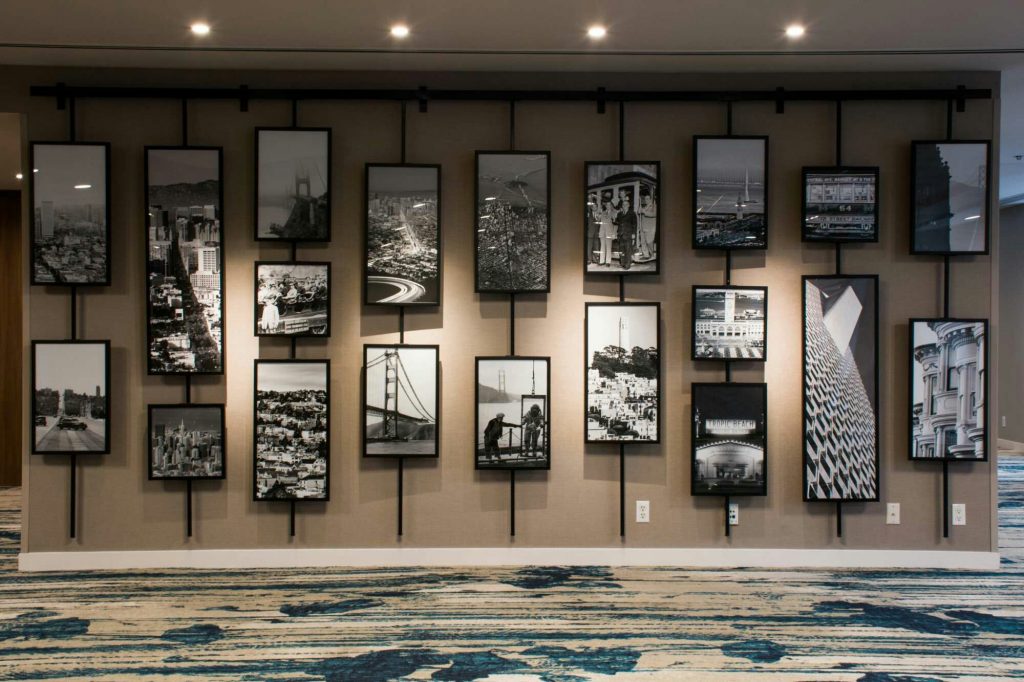
20. Adapt Lighting to Building Functions
To maximize energy efficiency, you need to look into the type of building, whether you own the space where you are working or are sub-leasing it. By looking at how each space in the building is used, you can save energy. You may be sharing the space with other businesses, retail shops, or residents using an area.
What is the Purpose of Effective Commercial Lighting?
Commercial lighting is a term used to describe various lighting methods used by commercial areas, including schools, restaurants, offices, factories, retail shops and many others.
Even the lighting design in public places such as government buildings and certain industrial and manufacturing lighting areas also comes under commercial lighting.
Prime Purpose of Commercial Lighting
The most crucial goal of an effective commercial lighting system is to ensure that both the inside and the outside of the working space are where everyone can work in a comfortable and appealing environment.
The business will benefit from tangible and intangible returns if the lighting plan is designed carefully.
A lighting plan should be devised to give the employees a comfortable environment to work efficiently, increasing their productivity. Furthermore, lighting systems should be energy efficient.
A well-designed lighting system will result in adequate lighting where some areas will be bright and others will be dull. Commercial buildings should be provided with lighting
effectively for the entire space, inside and outdoors. This way, no dark areas will be left.
Many other factors can interrupt; therefore, lighting designers also consider environmental factors. This could be more challenging if you are new to this because it gets very difficult to decide which lighting system suits your space the best.
Significance of an Appropriately Designed Lighting Plan
A lighting plan helps mitigate the risk of converting from commercial space to LED. We must ensure that the LED lights chosen are the most suitable for your space.
Not only this, the lighting plan will also contribute towards planning the lumen levels along with providing you with the most appropriate lighting design for the commercial area.
Since LED lights come in different color temperatures, many people don’t consider them when selecting an LED. However, it is the most important factor to look for in commercial lighting.
Impact of Color Temperature in Commercial Applications
The unit used to measure color temperature is Kelvins; the lower the number, the warmer the light, and the higher the number represents a cool tone.
- If you want lighting to create a comfortable atmosphere, mostly used in restaurants, then 2700K-3000K, a warm white light, is appropriate.
- In offices where employees must stay alert, you will see lighting used to be 3500K, a neutral white light.
- Many grocery stores use 4000K, which is cool-toned white light, as it helps the customer focus on a subject and promotes accurate color recognition.
- Various factories, warehouses and sports courts, such as baseball and tennis, tend to use a white light, which is 5000K.
Choosing The Right Type of Commercial Lighting
It is very important to select the right type of commercial lighting, and for this, you can always look forward to OLAMLED’s commercial lighting series; we have discussed these series and their specifications.
Olam Commercial Lighting Series:
1. Track Panel Light-TK01 Series
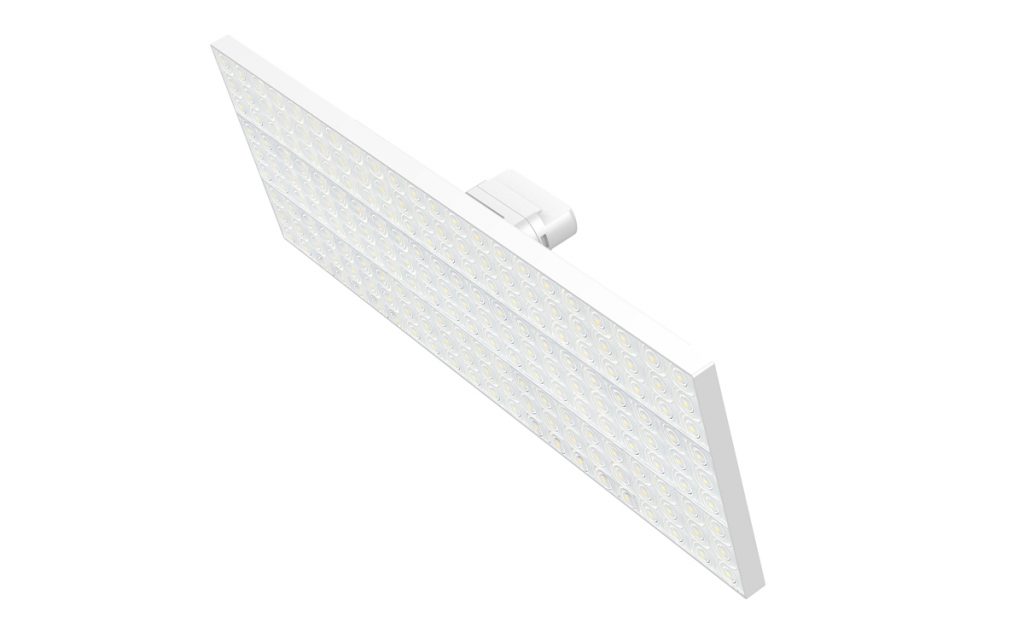
Track panel light TK-01 series is a track light that runs a series of LEDs lined on a track structure. This track uses a universal adaptor, offering a high luminous efficiency of 160 LM/W. the light offers a high UV tolerance and is housed in an aluminum enclosure with a PMMA lens.
It offers immense flexibility with its multiple beam angles and rotation in the horizontal direction, which can be done around 350 degrees. This lighting is ideally suitable for supermarkets, chain stores and warehouses. The best part is that it comes with smart features like dimming.
2. UGR<16 Track Panel Light-TD01 Series
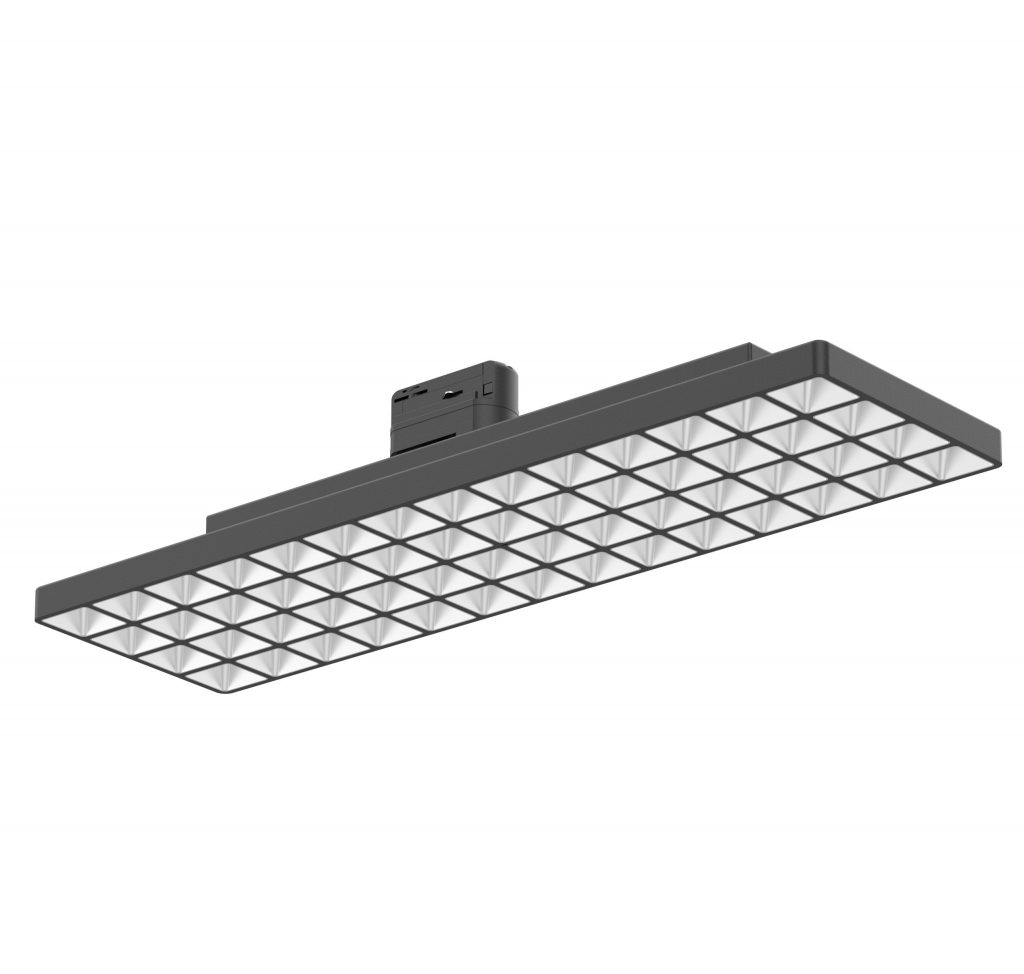
The track panel TD01 series from OLAMLED is a perfect choice for offices as it offers a glare-free light that ensures comfort and producibility. It offers adjustable wattage and has a glare rating of UGR<16. The beam angle ranges from 80 degrees or DS 20 degrees.
It can be installed in different ways, either by mounting it in suspended form or as a recessed installation.
3. Track Linear Light-TK02 Series
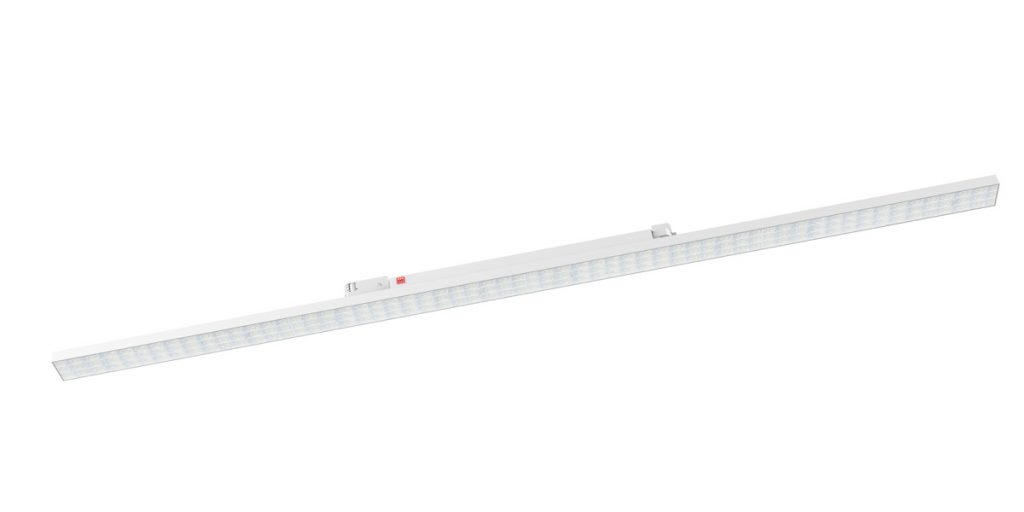
Track linear light comprises a series of LEDs fixed in a track and illuminates the entire space. These lights are used in shopping malls, warehouses and supermarkets. They offer a very high luminous intensity, around 160LM/W, offering great heat dissipation due to their aluminum housing.
This light offers varied lengths, which comprise 1152mm and 1442 mm, followed by dimming features and a choice of wattage.
4. UGR<16 Track Linear Light-TD02 Series
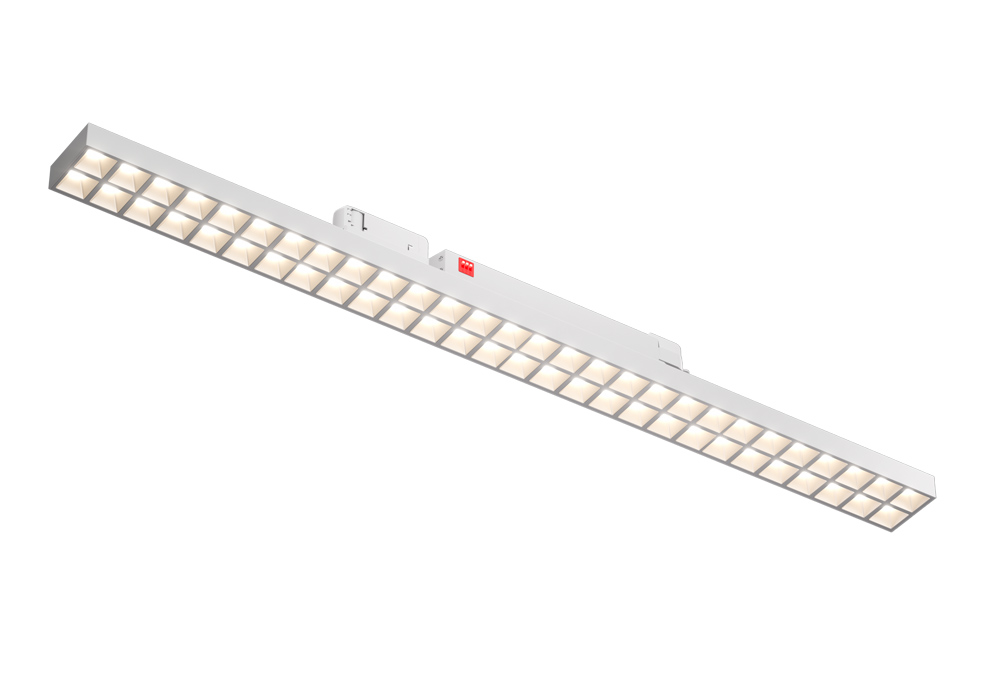
The track linear light TD-02 series offered by OLAMLED is an anti-glare light which protects eyes from hurting and is suitable for those who spend most of their time indoors. This light helps to block unwanted reflections and offers a very comfortable view.
It offers high luminous intensity, around 130 LM/W, followed by low decay and high tolerance for UV. It is housed in an aluminum enclosure, which offers great heat dissipation and high thermal conductivity. It is suitable for shopping malls and supermarkets but can also be a great option for offices due to its UGR<16.
Commercial Lighting Trends of 2024
To keep up with the lighting trends in 2024, some of the factors you must consider are discussed below:
1. Focus on Sustainability:
As we step into 2024, there will be a change in how people move towards a sustainable environment, focusing on energy efficiency. Commercial spaces will use eco-friendly lighting patterns promoting LED technology and solar-powered solutions in their offices.
This growing trend will align with the changing practices which are now more focused towards using environmentally friendly ways in your daily business activities.
2. Personalized and Adaptive Lighting:
Adaptive lighting systems are now built with sensors and responsive technology which move according to the human presence.
Integrating the latest adaptive lighting helps cater to a workplace’s wide needs by incorporating flexibility. This helps improve productivity and provides a more comfortable and sustainable working environment.
Since employees are a crucial part of any organization, it is very important to consider their viewpoint when deciding on lighting design. This will help in creating a healthy working environment with increased productivity.
When there is a tailoring option for the lighting system with customisation, employees can control the color temperature and the pattern, which will help them create an office environment aligned with the nature of the business.
3. Mixing Old with New for a Nostalgic Touch:
Many companies mostly like a retro-modern touch. In the coming time, you will see that the companies are incorporating a touch of classic lighting into their business spaces, which goes so well with modern technology. This adds an everlasting charm to the entire working space.
4. Bringing Nature Indoors for Inspiration:
Since employees are crucial to businesses, it is very important to keep them satisfied and help them stay motivated and stress-free. Companies are now trying to do so by focusing on natural lights, which helps create a healthy workspace.
Nature always has a positive influence on commercial designs. Hence, interior designers are now taking full advantage of nature by adding a touch of organic materials to the commercial lighting system.
Promoting a healthy connection between nature and the indoor space will foster a healthy business environment.
5. Comfortable Lighting with Natural Materials:
Incorporating nature in the workplace helps create an intimate and welcoming environment. Bamboo is being highly used by designers in designing workspaces where there is a need to build a healthy and cozy environment.
Light shades made from jute, water grass and materials like linen, and woven shades with warm white bulbs are commonly installed. Overall, this natural touch makes the office environment appealing to the employees and clients.
6. Sleek and Minimalist Cylinder Lights:
Using sleek and cylindrical lights is an upcoming trend in 2024 to create a modern, contemporary business space.
These trending lighting fixtures bring out sophistication and simplicity in the overall environment, creating a modern aesthetic that looks good and provides required illumination, hence being preferred by commercial and residential projects.
7. Advancements in Lighting Technology:
The most popular choice in commercial lighting is LED. The latest LED technology has become energy efficient, and since it can last longer hours, it is cost-effective.
The growing trend of LED technology shows that the world will see more advancement, which will help businesses by being versatile and sustainable.
Since artificial intelligence has taken over the world it will further help the lighting industry grow too, which means businesses will use lighting systems which AI will carry out. Businesses can now work with lighting systems which suit their environment with precision.
8. Lighting as a Focal Point in Design
In 2024, lighting will not be just a part of design but instead, it will be the most important highlight of the entire business space. By having the right lighting systems businesses will create their image and identity.
